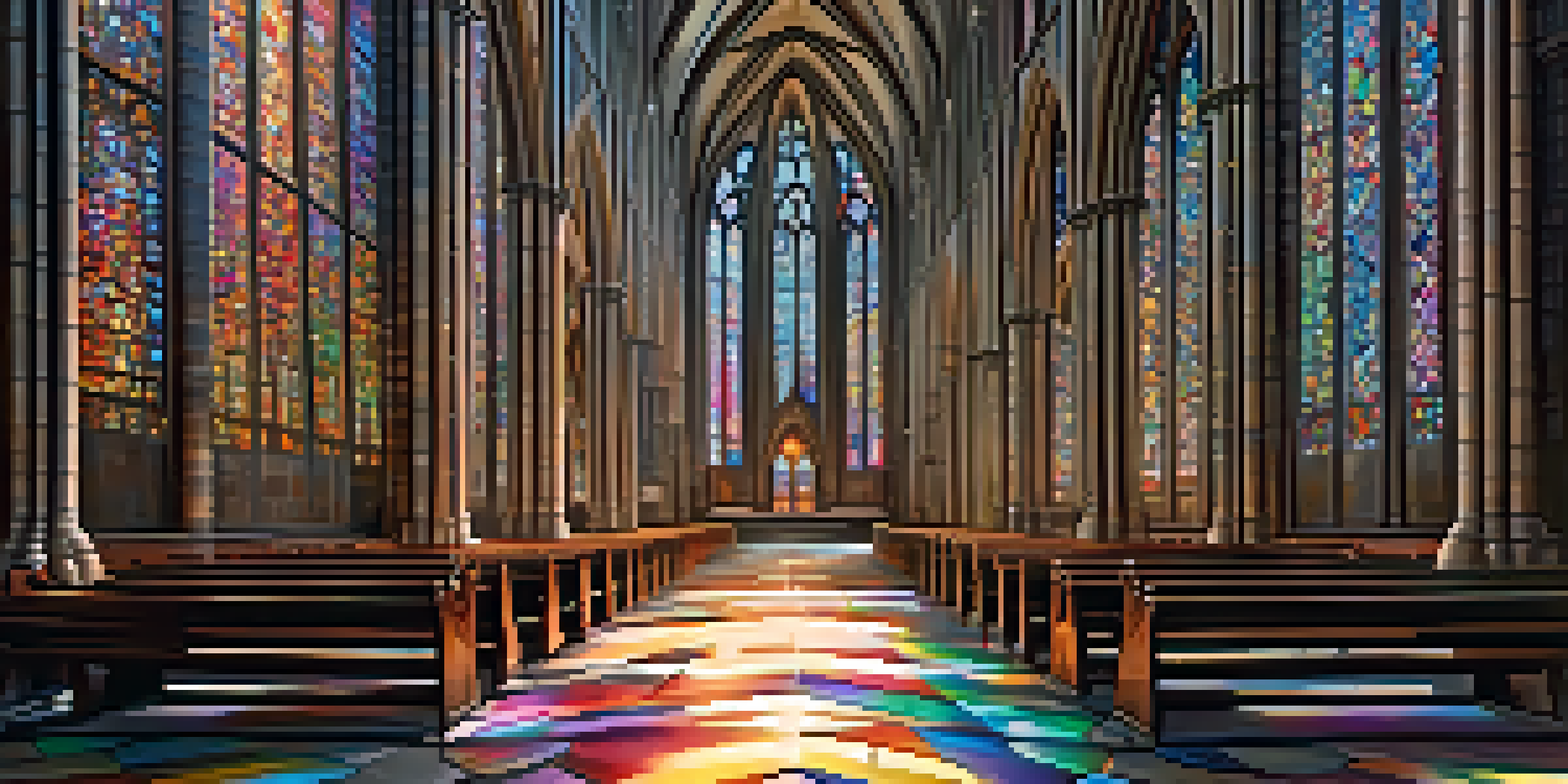Exploring Gothic Architecture in Europe: A Historical Journey

What is Gothic Architecture? An Overview
Gothic architecture emerged in the 12th century and flourished until the 16th century, primarily in Europe. It is characterized by its pointed arches, ribbed vaults, and flying buttresses, which allowed for taller structures and larger windows. This architectural style aimed to inspire awe and reflect the divine, bringing light and space into sacred places. Think of it as a bridge between the earthly and the heavenly, where every element serves a purpose in creating a spiritual experience.
Key Features of Gothic Architecture
One of the most striking features of Gothic architecture is the use of light. Large stained glass windows adorned many cathedrals, bathing interiors in colorful, ethereal light. Additionally, the pointed arch not only provided aesthetic appeal but also improved structural integrity, allowing architects to push the boundaries of height. This unique combination of beauty and engineering truly set Gothic structures apart from their Romanesque predecessors.
Gothic Architecture Origins
Gothic architecture began in 12th century France, with the Basilica of Saint-Denis marking its first true expression.
The Birth of Gothic Architecture in France
Gothic architecture first took root in France, with the Basilica of Saint-Denis often credited as the first true Gothic structure. Built in the 1140s, it introduced elements like ribbed vaults and flying buttresses that became hallmarks of the style. The movement then spread rapidly, influencing the construction of iconic cathedrals like Notre-Dame de Paris. This period marked a significant shift in architectural thinking, emphasizing verticality and luminosity.
England's Distinctive Gothic Style
The English Gothic style developed its own identity, known as 'Perpendicular Gothic,' characterized by its emphasis on vertical lines and large windows. Cathedrals like York Minster and Westminster Abbey showcase this unique approach, with intricate stonework and soaring ceilings that draw the eye upward. The use of fan vaulting is another notable feature, creating a stunning visual effect that resembles a delicate lacework. This style reflects England's cultural and artistic evolution during the medieval period.
Distinct Regional Styles
Different regions, like England and Germany, developed unique Gothic styles that reflected local culture while maintaining core architectural principles.
The Influence of Gothic Architecture in Germany
Germany embraced Gothic architecture with a flair that combined local traditions with the broader European style. Cathedrals such as Cologne Cathedral are prime examples, featuring pinnacles and detailed sculptures that tell biblical stories. The German approach often incorporated a greater emphasis on ornate decoration, showcasing craftsmanship and artistry. This distinctiveness illustrates how Gothic architecture adapted to regional influences while maintaining its core principles.
Gothic Revival: A 19th Century Resurgence
The 19th century saw a revival of Gothic architecture, often referred to as the Gothic Revival. This movement was fueled by a fascination with medieval history and a desire to reconnect with the spiritual roots of architecture. Structures like the Palace of Westminster in London and the Cologne Cathedral were either renovated or constructed anew in this style. The revival not only honored the past but also allowed architects to experiment with modern materials while retaining Gothic aesthetics.
Gothic Revival's Modern Impact
The 19th-century Gothic Revival reignited interest in medieval architecture, blending traditional aesthetics with modern materials in iconic structures.
Gothic Architecture and Its Cultural Impact
Beyond its physical structures, Gothic architecture has profoundly influenced art, literature, and culture. The dramatic aesthetics of cathedrals inspired countless artists, writers, and filmmakers, creating a lasting legacy that extends far beyond the Middle Ages. From the eerie ambiance of Gothic novels to the grandiosity of modern adaptations, the style continues to captivate our imagination. It serves as a reminder of humanity's quest for beauty, connection, and transcendence.
Exploring Gothic Architecture Today
Today, Gothic architecture remains a vital part of Europe’s cultural heritage, attracting millions of visitors each year. Cities like Paris, Vienna, and Prague boast stunning examples where you can immerse yourself in the grandeur of the past. Many of these structures are preserved as UNESCO World Heritage Sites, ensuring they withstand the test of time. Visiting these iconic buildings is like stepping into a living history book, where each stone tells a story waiting to be discovered.